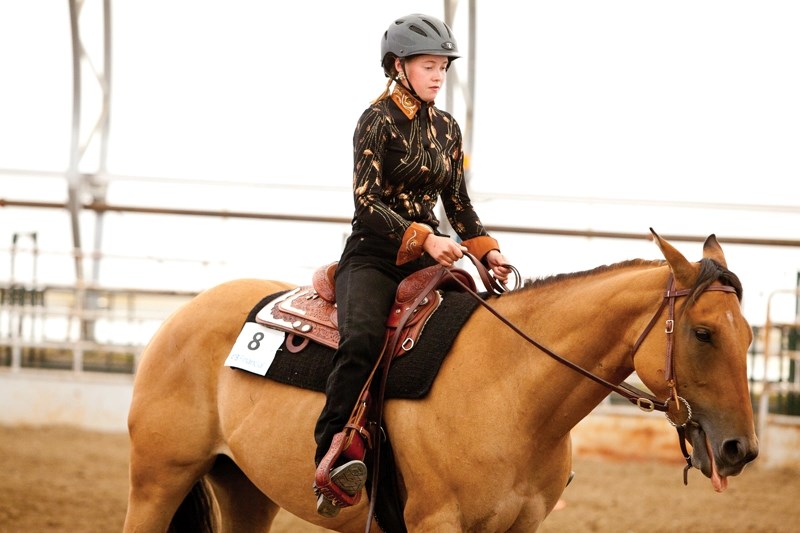New rules requiring inexperienced 4-H horse riders, regardless of their age, to wear helmets during practices and shows are being warmly welcomed by riders and instructors alike.Nola Bowhay ñ a Bergen 4-H leader who has taught riding to many, many members ñ says if the new rules help prevent injuries in falls and other mishaps, they are certainly worthwhile.ìThere's good reason for this and I think they are good new rules,î said Bowhay. ìIt's a safety issue and will help protect the rider. I'm happy about it.îAs of Oct. 1, 2011, a mandatory helmet requirement came into effect for young and inexperienced members of all 4-H clubs provincewide.Under the new policy, 4-H members in Horsemanship Levels I, II, and III, or those born after Dec. 31, 2000 are required to wear approved helmets while mounted.Nola's daughter Bronwen Bowhay, 17, is Sundre's Rodeo Queen and a long-time Bergen 4-H member. She calls the new helmet rules a great step.ìI think it's good,î said Bronwen. ìIt gives you more protection when you are learning how to ride. If a freak accident comes along and you are wearing a helmet you don't have to worry so much.ìThere were a couple of times when I was learning to ride and the helmet was helpful. One time I was riding my horse and a deer came out and it spooked the horse. There are little incidents that you might not be expecting that can come up and happen.îThe Sundre and Bergen 4-H clubs made helmets required equipment for all inexperienced riders years ago.ìWe've always made our kids wear helmets from levels 1 to 3 at our practices,î said Nola. ìThere really isn't an age limit because you could have 16- or 17-year-olds who are just starting to ride.îMany other 4-H clubs also already had mandatory helmet policies in place. The new rules means the practice is now a requirement.ìWe wanted to be more progressive in the areas of risk management and injury prevention for our equine 4-H members,î Stacy Price, president of the Alberta 4-H Council, said in a press release about the new policy.ìIt is important young riders become comfortable with a helmet requirement at 4-H events so they will also choose to wear a helmet when they are riding at home or on their own.ìWe hope equestrian helmets will just become part of the proper clothing 4-H members don before mounting a horse, regardless of where they are riding.ìParents, guardians, 4-H leaders and 4-H members all need to be on board for the new policy implementation this fall to be successful.îKenda Lubeck, farm safety co-coordinator with Alberta Agriculture and Rural Development (ARD), added: ìEven with experience and a docile animal, horseback riding has the potential to be dangerous. The most skilled horseperson on a well-trained horse can't possibly predict every move, especially on an animal that is hard-wired to flee from danger.ìThere is actually a higher rate of injury per hour of exposure in horseback riding than in other notably high-risk sports like downhill skiing, motorcycle racing, and hang-gliding.îAn equestrian helmet covers more of the head than either a bicycle or ATV helmet and has been tested and approved for the proper ìcrush rateî to provide riders with the optimum protection, she said.ARD says when buying an equestrian helmet, users are encouraged to make sure to look for helmets that have been approved by at least one of the following standard-setting organizations: the American Society for Testing Materials (ASTM), the Safety Equipment Institute (SEI) or, the British Standards Institute (BSI).




